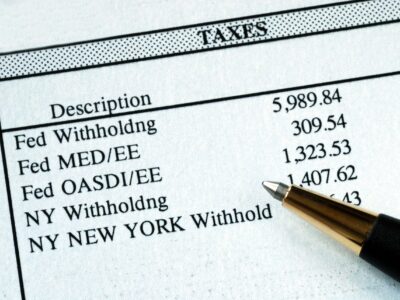
After a 2-for-1 stock split, an individual investor who had owned 1,000 shares might be elated at the prospect of suddenly being the owner of 2,000 shares. However, every stockholder’s bookkeeping number of shares has doubled—causing the value of each share to be worth approximately half of what it was before the split. If a corporation had 100,000 shares outstanding, a stockholder who owned 1,000 shares owned 1% of the corporation (1,000 ÷ 100,000). After a 2-for-1 stock split, the same stockholder still owns just 1% of the corporation (2,000 ÷ 200,000). Before the split, 1,000 shares at $80 each totaled $80,000; after the split, 2,000 shares at $40 each still totals $80,000.

What can shareholders’ equity tell you?
Alternatively, some companies use treasury stock to thwart a hostile takeover attempt. Additional Paid-In Capital or APIC is an essential component of the shareholders’ equity formula. It refers to the money paid to purchase shares of companies beyond the declared par value of such shares.
What Are the Components of Shareholders’ Equity?
Therefore, the shareholders’ equity formula offers excellent insights into a company’s financial condition and sustainability. You can find the shareholders’ equity value at the end of the balance sheet of a company. Since, according to the shareholders’ equity formula, all liabilities of a company must be deducted from assets, the shareholders’ actual assets are the sum total of its shareholders’ equity and liabilities.
Other Comprehensive Income
Based on a company’s dividends preference and in times of liquidation, its preferred stock is listed first in the stockholders’ equity section. Preferred stock where past, omitted dividends do not have to be paid before a dividend can be statement of stockholders equity paid to common stockholders. In the case of noncumulative preferred stock, only its current year dividend needs to be paid in order for a corporation to pay a dividend to its common stockholders. If a corporation has both common stock and preferred stock, the corporation’s stockholders’ equity (the corporation’s book value) must be divided between the preferred stock and the common stock. To arrive at the total book value of the common stock, we first compute the total book value of the preferred stock, and then subtract that amount from the total stockholders’ equity. It is important to note that there is no entry to record the liability for dividends until the board declares them.

Total liabilities are the sum of all liabilities on the balance sheet, both current and fixed (long-term) liabilities. This includes accounts payable, taxes payable, bonds payable, leases, and pension obligations. Stockholder’s equity pertains to the net assets of a stock corporation It comprises share capital, reserves, and retained earnings. Treasury stocks are shares of the corporation that have been issued and then were reacquired but not cancelled. In the balance sheet, the cost of treasury stock is shown as a deduction to Stockholders’ Equity. Stockholders’ equity represents the portion of total assets that is left to the stockholders of a corporation after all of its liabilities are paid.
Outstanding Shares
It represents the additional amount an investor pays for a company’s shares over the face value of the shares during a company’s initial public offering (IPO). Outstanding shares are also Retail Accounting an important component of other calculations, such as those for market capitalization and earnings per share (EPS). Conceptually, stockholders’ equity is useful as a means of judging the funds retained within a business.
Stockholders’ Equity vs. Market Value
On the other hand, liabilities are the total of current liabilities (short-term liabilities) and long-term liabilities. Current liability comprises debts that require repayment within one year, while long-term liabilities are liabilities whose repayment is due beyond one year. The closer the ratio is to 100%, the more its assets have been financed with stock rather than debt. In general, a number below 50% indicates a company that is heavily leveraged.
- The Motley Fool reaches millions of people every month through our premium investing solutions, free guidance and market analysis on Fool.com, top-rated podcasts, and non-profit The Motley Fool Foundation.
- A second retained earnings account that reports the amount that a company has transferred from the unappropriated or regular retained earnings account.
- The most effective approach will depend on the company’s unique financial situation, industry dynamics, growth stage, and strategic objectives.
- Assets include cash, cash equivalents, land, machinery, inventory, accounts receivable, etc.
- It’s an opportunity for education and to find strategies to clean up the financial statements.
- In the balance sheet, you will be able to see the assets, liabilities, and shareholders’ (stockholders) equity of the company during the reporting period.
- Things that are resources owned by a company and which have future economic value that can be measured and can be expressed in dollars.
What is the purpose of equity in the balance sheet?
- The common stockholder has an ownership interest in the corporation; it is not a creditor or lender.
- The book value of an asset is also referred to as the carrying value of the asset.
- Therefore, debt holders are not very interested in the value of equity beyond the general amount of equity to determine overall solvency.
- Anna Yen, CFA is an investment writer with over two decades of professional finance and writing experience in roles within JPMorgan and UBS derivatives, asset management, crypto, and Family Money Map.
- It is important to note that there is no entry to record the liability for dividends until the board declares them.
For example, a company will have a Cash account in which every transaction involving cash is recorded. A company selling merchandise on credit will record these sales in a Sales account and in an Accounts Receivable account. The term that refers to the stock of a corporation which is traded on the stock exchanges (as opposed to stock that is privately held among a few individuals). If a supplier sold merchandise to a company on credit, the supplier is a creditor.
- As a result these items are not reported among the assets appearing on the balance sheet.
- For example, let’s say you generate a positive after-tax net income one year.
- In the balance sheet, the cost of treasury stock is shown as a deduction to Stockholders’ Equity.
- Each journal entry must have the dollars of debits equal to the dollars of credits.
- Aside from the ROE ratio, shareholders’ equity is also used to calculate ratios like the book value of equity per share (BVPS) and debt-to-equity ratio (D/E).
- It differs from assets and liabilities, which are resources owned by the company and its obligations to others, respectively.
Definition of Stockholders’ Equity

Investors, lenders and analysts use stockholders’ equity to inform their investment and lending decisions regarding a company. Transactions that involve stockholders are primarily the distribution of dividends and the sale or repurchase of the company’s stock. If the above-mentioned routes are not visible, then there would be a need to collate the amounts from individual accounts in the company’s general ledger. The following are the components that make up the stakeholders’ equity section in the balance sheet.

